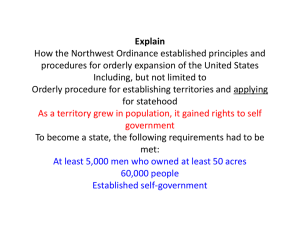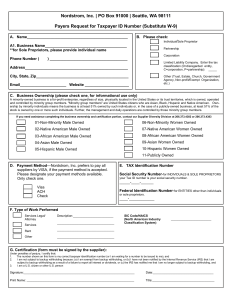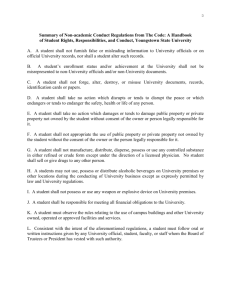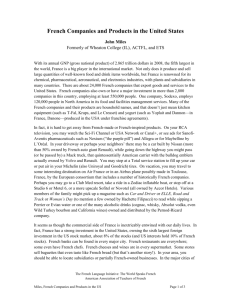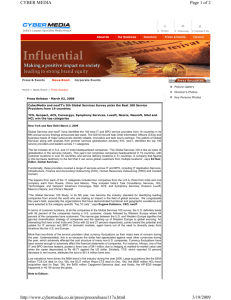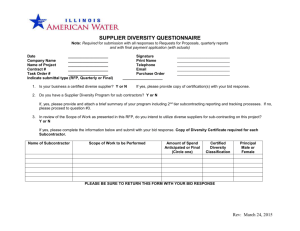Trends in the ownership and control of the media
advertisement
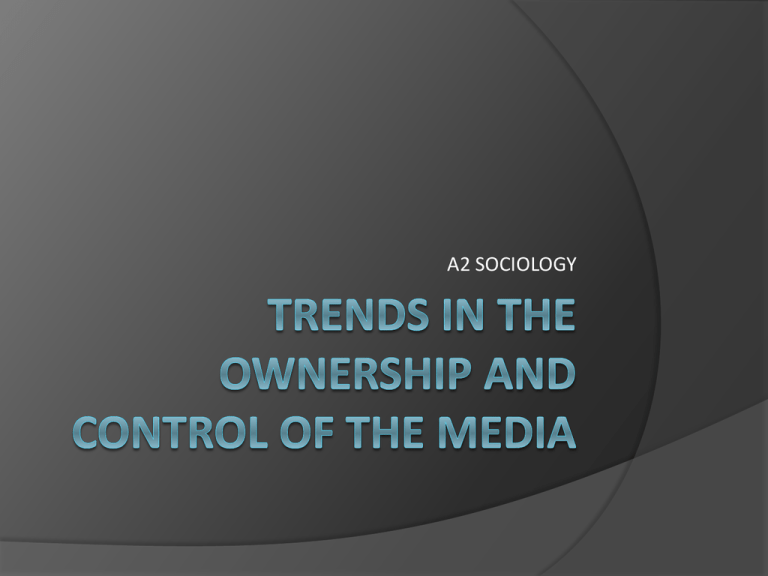
A2 SOCIOLOGY Media ownership http://www.youtube.com/watch?v=cjwJ2JS EjzM Introduction The mass media are generally defined as those agencies of communication that transmit information, education, news and entertainment to mass audiences, There are broadly three types of media: 1. The print media, 2. Audio visual media, 3. Cybermedia or digital media. Print media Newspapers, magazines, comics, books, and some form of news advertising – most of the these types of media are commercially owned and produced in order to generate profit for the publishing companies that own them. The audio visual media Terrestrial and satellites television, radio, cinema, DVDs, and music. Most of these medias are owned and produced by commercial broadcasters whose main aim is to make profit usually through subscriptions and/or advertising revenue. In the UK a significant proportion of the audio visual media is publicly owned or state owned. Cybermedia and digital media Those are the new types of media whicoh also include the internet or worldwide web and in particular interactive online websiites such as Facebook. What do you think Individually read through the handout and answer the three questions. Ownership and control Why do you think those two key terms are important when looking at the mass media ? Ownership and control Some sociologist have expressed concerns about recent trends in media ownership and control. The number of media outlets available to the general public has increased dramatically (increased in the TV choice and the birth of the internet), All these changes in the in the availability of media seem to imply a greater degree of choice however some sociologist argue that this might just an illusion Concentration of ownership Bagdikian (2003) In 1983, 50 corporations controlled the vast majority of all news media in the USA, In 1992, 22 companies owned 90 percent of the media, He argues that if the USA media were owned by separate individuals there would be 25000 owners, Media/cybermedia ownership in the USA Time Warner, Bebo 2. Disney, 3. News Corp, MySpace 4. Sony, 5. Bertelsmann of Germany, 6. Viacom (formerly know as CBS), 7. General Electric NBC 1. Concentration of media ownership 4 distinct features: Ownership within a single medium e.g. Company owning several newspaper, Owners have an interest in a range of media such as newspapers, magazines, book publishing, the film industry, Ownership is international: owners have media interest in many different countries, Media conglomerates: companies that have a range of interest in a wide rage of interest in a wide variety of products besides the media. For example Virgin also has an airline, train company, soft drinks, mobiles phones etc... Who owns what in the UK Read through table 3.2 in your handout which summarises media ownership in the UK. Suggest at least 2 reasons why the concentration of ownership of the mass media might be of concern in a democracy ? Media ownership in the media Broadcasting media – ITV Plc (owns 11 of 15 regional commercial television franchise), NewsCorp ( Murdoch) – BSkyB, Virgin Media (Branson) British Music Industry – EMI Reading task Read the article on media ownership and British politics ... What message is the author of the article trying to bring across? Horizontal Integration AKA cross media ownership which refers to the fact that bigger media companies often have a diverse range of media (NewsCorp) Newspaper, Century Fox, Star TV Vertical Integration Some media companies are increasingly trying to control all aspects of their industry in order to maximise their profits. E.g. Time Warner makes its own films and distributes them to its own cinema complexes Vertical integration therefore gives the media companies greater control over their operating environment. Diversification AKA as lateral expansion and occurs when firms diversify into new business areas to spread risks. Losses into one area may be compensated by profits in another (Virgin Media) Global conglomerations Media companies have taken advanitage of the erosion of traditional boundaries surrounding media markets. Globalisation has opened up natyional markets and has created international competitions between media companies. E.g.NewsCorp – owns newspaperws in australia, the UK and the USA. Synergy Media companies are using different interest to package their products in several different ways E.g. Spiderman 2 was not only a movie but also a soundtrack, ringtone, computer game, toy action figures, etc... Very often the media company producing the film also own the companies that produce the music and computer game (franchise) Technological Convergence A fairly new concept which refers to the trend of putting several technologies into one media product for example through the personal computer, mobile phones, digital television. E.g. we can access the internet, telecommunication services, paying bills, buying and downloading media through the use of mobile phones and personal computers. Plenary Individually without using your notes, match the correct trend, definition and evidence. You have 10 minutes to complete this task


